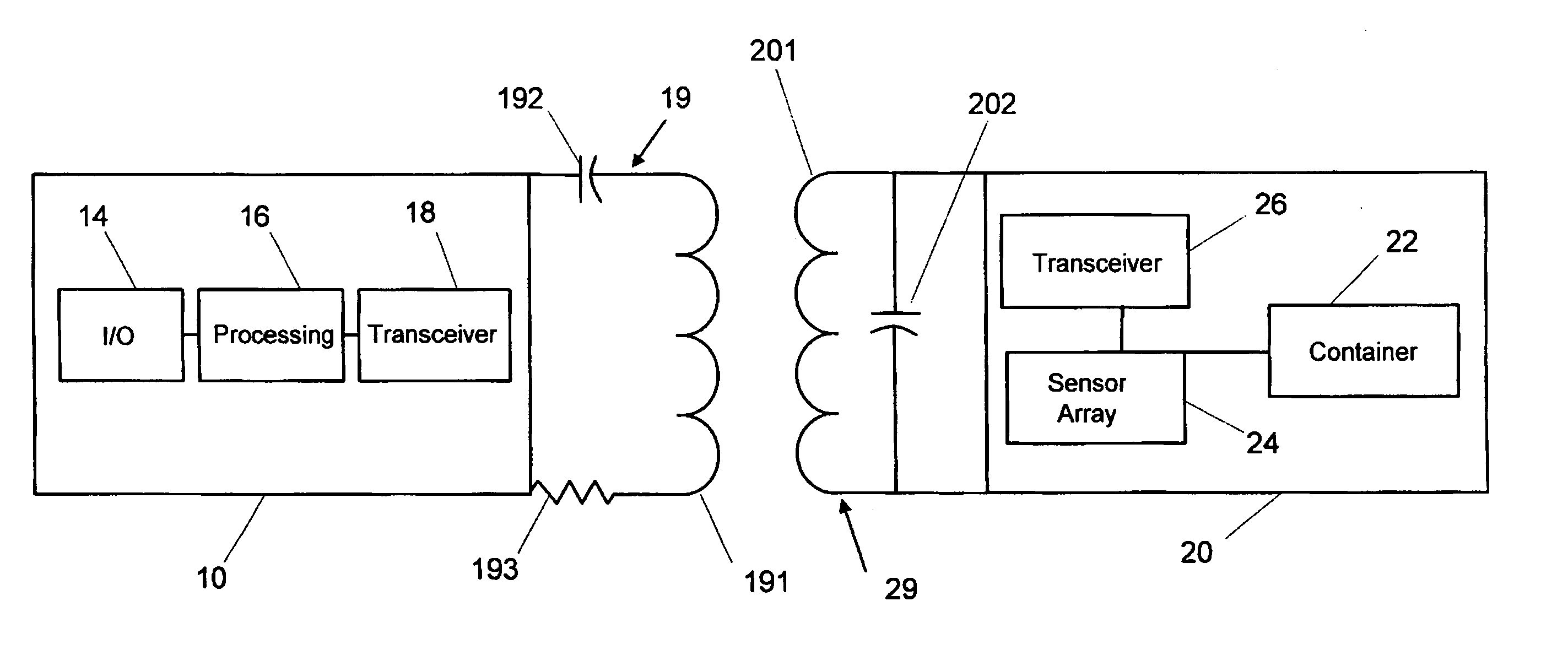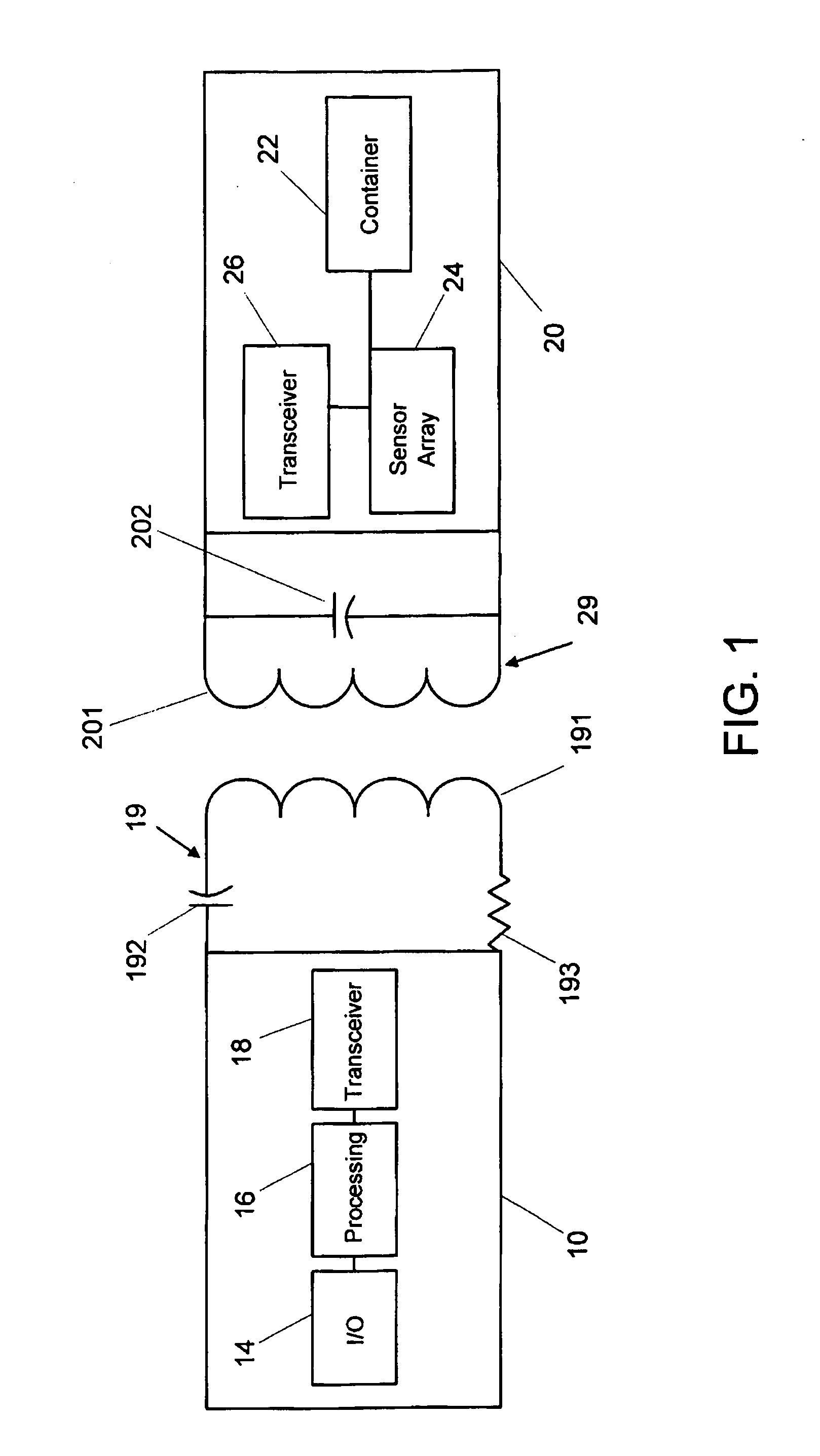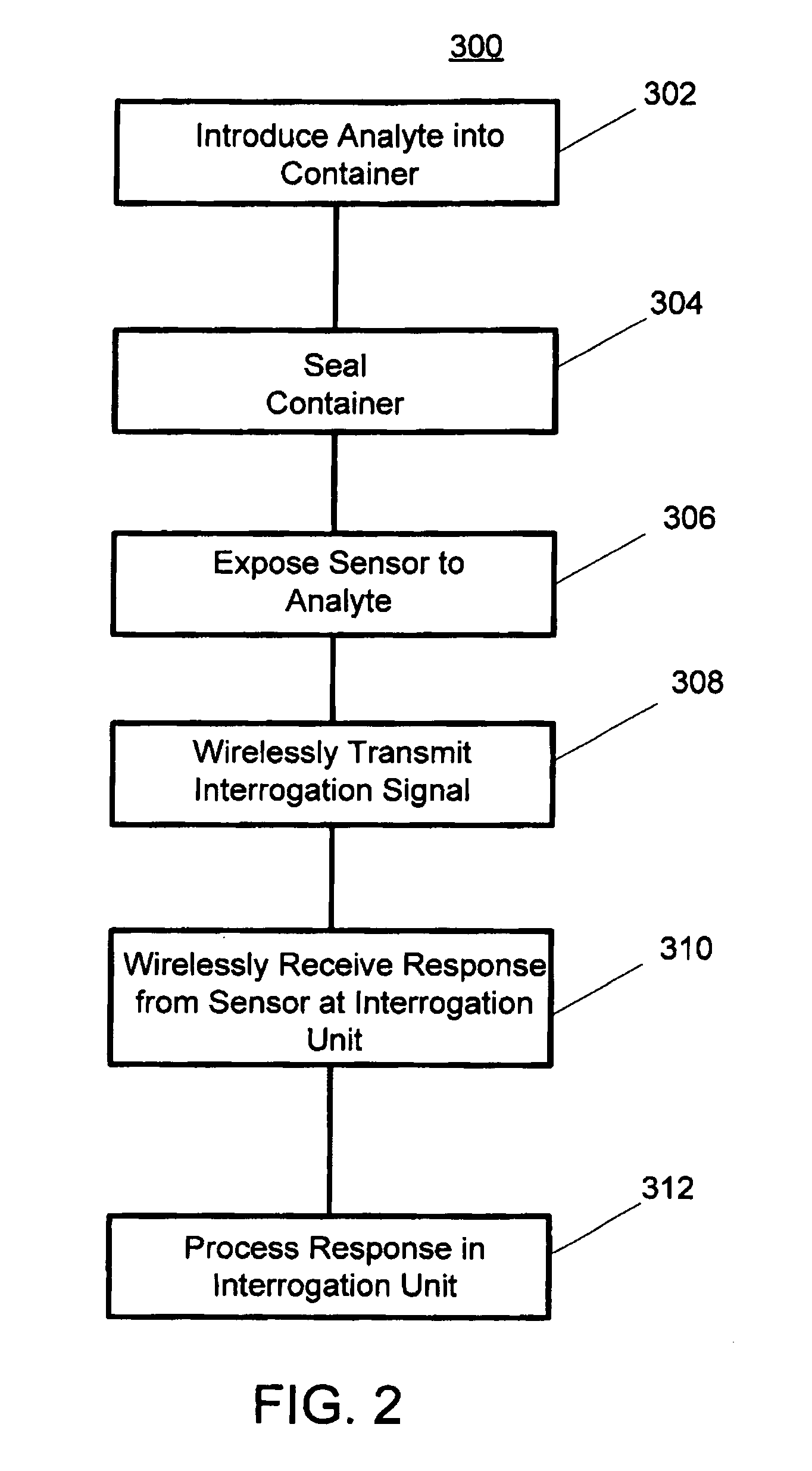Sensor arrangement
a technology of sensors and dividers, applied in the direction of simultaneous indication of multiple variables, instruments, specific gravity measurement, etc., can solve the problems of difficult implementation of options, limited tag technology, and exposure of the operator of such a device to hazardous conditions
- Summary
- Abstract
- Description
- Claims
- Application Information
AI Technical Summary
Problems solved by technology
Method used
Image
Examples
Embodiment Construction
In general, the embodiments of the present invention relate to a chemical sensing system using sensing devices that are wirelessly connected with the associated pick-up / receiver and processing units that are used for chemical analyte sensing and monitoring.
More particularly, the invention relates to a novel wirelessly connected arrangement that has sensing elements that respond to an analyte or analytes.
This novel sensing structure may be used to sense the presence, concentration, or absence of chemical elements and compounds (whether useful or unwanted / contaminating in a liquid, gas, or plasma state), pH levels, germs (bacteria, virus, etc.), enzymes, antibodies, and so on in a number of environments such as biomedical applications (whether in vivo or in vitro), within medical test samples, food quality / inspection (whether measuring moisture within sealed packing or outside of packaging), monitoring of heavy metals found in water (groundwater, treated water, or wastewater flow...
PUM
| Property | Measurement | Unit |
|---|---|---|
| electrical signal | aaaaa | aaaaa |
| electrical property | aaaaa | aaaaa |
| semiconducting | aaaaa | aaaaa |
Abstract
Description
Claims
Application Information
 Login to View More
Login to View More - R&D
- Intellectual Property
- Life Sciences
- Materials
- Tech Scout
- Unparalleled Data Quality
- Higher Quality Content
- 60% Fewer Hallucinations
Browse by: Latest US Patents, China's latest patents, Technical Efficacy Thesaurus, Application Domain, Technology Topic, Popular Technical Reports.
© 2025 PatSnap. All rights reserved.Legal|Privacy policy|Modern Slavery Act Transparency Statement|Sitemap|About US| Contact US: help@patsnap.com



